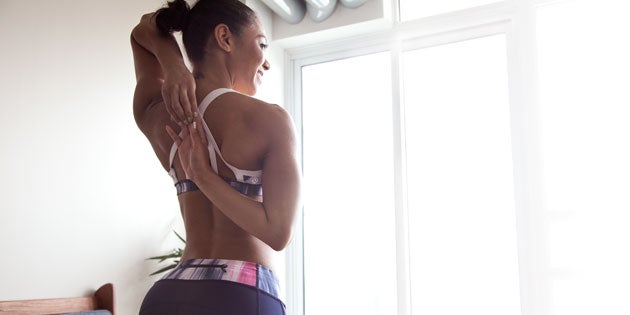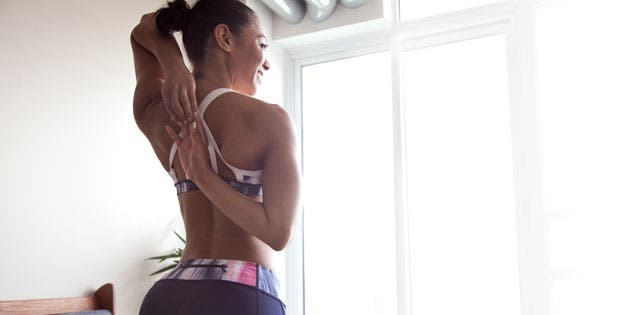Loosen Up


Stretching. When it comes to figuring out the proper guidelines, it can be more controversial than co-ed naked yoga. Conduct an informal poll around your gym, ask your trainer, bring it up with your workout pals, and the reviews and recommendations will be mixed.
Your friends may be telling you that preworkout stretches are bad for you or that they can cause muscle injury, and even in the fitness realm, stretching can sometimes get mixed reviews. But if you’re not stretching properly — no matter how tight your glutes or flat your abs — you’re missing out on fitness benefits that could both boost your health and well-being, and make you stronger for life. And according to a 2012 report from the American College of Sports Medicine (ACSM), tight muscles — the kind that result from skipping your postworkout stretch — can contribute to back pain or difficulty performing simple tasks. Think about it this way: remember when your mother or grandmother started complaining that she could no longer touch her toes or put items away in the top cupboards? If you’re not stretching, no matter how fit you think you are, you could be on your way to losing your mobility sooner than expected.
The Third Pillar Of Fitness
Many women make the assumption that if they’re fit, they’re automatically going to be bendy. But just because you’re in great shape doesn’t mean you’re flexible, says Terri Walsh, celebrity fitness trainer and designer of The A.R.T. Method, which stands for “active resistance training.” According to Walsh, flexibility training, or stretching, shouldn’t just be something you do for a few minutes a day before or after your workouts, but rather a training session in itself; it should be a priority, not an afterthought. When it comes to living the Oxygen lifestyle, stretching should be the third pillar of your fitness routine, right alongside cardio and weight training. “I can’t find a downside to being more flexible,” says Walsh. “We’re all going to get older, which means the more you maintain your flexibility, the better you’ll be able to prevent injury.”
Another flexibility bonus: in a 2012 ACSM report on basic knee injury prevention, stretching was cited as the first and most important line of defense against injury, and named an absolute must for those who had already sustained a strain, sprain or tear.
See AlsoThe Rules Of Stretching
Moreover, several studies have revealed that regular stretching, even for a short duration, increases the motion range of a joint, and may reduce muscle stiffness postworkout. Certified fitness personal trainer Sarah Robichaud, agrees. “Stretching after a workout helps increase blood flow to the muscles, helping to rid them of lactic acid and other byproducts, which in turn reduces muscle soreness.” Plus, the more you stretch, the more you’ll be able to create muscular balance in the body. “That’s what you want,” says Robichaud. “Tight hamstrings can lead to sore hips and glutes, which will impede your progress.”
This much is clear: in the same way that you nourish your body for your workouts with clean eating and targeted hydration, you must also nourish your muscles through flexibility training.
Beyond The Gym
When muscles are protected through stretching, it naturally follows that your workouts become more efficient, more body fat is burned, and your metabolism is boosted. But the benefits of stretching extend far beyond your training sessions. Stretching and the increased flexibility it promotes can actually help to improve your posture by realigning the spine — which is especially important if you spend much of your day in an office, planted in a chair. And while the relationship between stretching and disease prevention is not yet conclusive as far as research goes, the increased blood flow and improved circulation you get from stretching may potentially protect women against some vascular issues, such as varicose veins and blood clots.
When it comes to pain management, stretching might be a magic bullet: a 2011 study published in the Archives of Internal Medicine found that stretching was just as effective as yoga for relieving chronic low-back pain in healthy subjects — and you don’t have to commit to lengthy stretch-based classes to reap this benefit.
Instead, make stretching a part of your lifestyle by working it into key moments, like waking up in the morning and going to bed at night. Both are optimal times to reap the pain-relieving and stress-reducing benefits, resulting in more energy throughout the day, a better sleep at night, and a more balanced, happier you.